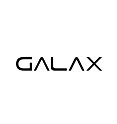 PowerColor Red Dragon RX Vega 56 8GB
PowerColor Red Dragon RX Vega 56 8GB
 PowerColor Radeon RX Vega 56 Nano
PowerColor Radeon RX Vega 56 Nano
Comparision PowerColor Red Dragon RX Vega 56 8GB vs PowerColor Radeon RX Vega 56 Nano
Grade
Top specs and features
- Passmark score
- 3DMark Cloud Gate GPU benchmark score
- 3DMark Fire Strike Score
- 3DMark Fire Strike Graphics test score
- 3DMark 11 Performance GPU benchmark score
Passmark score
3DMark Cloud Gate GPU benchmark score
3DMark Fire Strike Score
3DMark Fire Strike Graphics test score
3DMark 11 Performance GPU benchmark score
Description
The PowerColor Red Dragon RX Vega 56 8GB video card is based on the Vega architecture. PowerColor Radeon RX Vega 56 Nano on the Vega architecture. The first has 12500 million transistors. The second is 12500 million. PowerColor Red Dragon RX Vega 56 8GB has a transistor size of 14 nm versus 14.
The base clock speed of the first video card is 1177 MHz versus 1138 MHz for the second.
Let's move on to memory. PowerColor Red Dragon RX Vega 56 8GB has 8 GB. PowerColor Radeon RX Vega 56 Nano has 8 GB installed. The bandwidth of the first video card is 409.6 Gb/s versus 409.6 Gb/s of the second.
FLOPS of PowerColor Red Dragon RX Vega 56 8GB is 10.48. At PowerColor Radeon RX Vega 56 Nano 10.06.
Goes to tests in benchmarks. In the Passmark benchmark, PowerColor Red Dragon RX Vega 56 8GB scored 13341 points. And here is the second card 12981 points. In 3DMark, the first model scored 20344 points. Second 19795 points.
In terms of interfaces. The first video card is connected using There is no data. The second is There is no data. Video card PowerColor Red Dragon RX Vega 56 8GB has Directx version 12. Video card PowerColor Radeon RX Vega 56 Nano -- Directx version - 12.
Regarding cooling, PowerColor Red Dragon RX Vega 56 8GB has 210W heat dissipation requirements versus 210W for PowerColor Radeon RX Vega 56 Nano.
Why PowerColor Red Dragon RX Vega 56 8GB is better than PowerColor Radeon RX Vega 56 Nano
- Passmark score 13341 против 12981 , more on 3%
- 3DMark Cloud Gate GPU benchmark score 122852 против 119535 , more on 3%
- 3DMark Fire Strike Score 16756 против 16304 , more on 3%
- 3DMark Fire Strike Graphics test score 20344 против 19795 , more on 3%
- 3DMark 11 Performance GPU benchmark score 28504 против 27734 , more on 3%
- 3DMark Vantage Performance test score 53494 против 52050 , more on 3%
- 3DMark Ice Storm GPU benchmark score 404564 против 393641 , more on 3%
- GPU base clock speed 1177 MHz против 1138 MHz, more on 3%
PowerColor Red Dragon RX Vega 56 8GB vs PowerColor Radeon RX Vega 56 Nano: highlights


Performance
Memory
General information
Functions
Benchmark tests
Ports
FAQ
How does the PowerColor Red Dragon RX Vega 56 8GB processor perform in benchmarks?
Passmark PowerColor Red Dragon RX Vega 56 8GB scored 13341 points. The second video card scored 12981 points in Passmark.
What FLOPS do video cards have?
FLOPS PowerColor Red Dragon RX Vega 56 8GB is 10.48 TFLOPS. But the second video card has FLOPS equal to 10.06 TFLOPS.
What power consumption?
PowerColor Red Dragon RX Vega 56 8GB 210 Watt. PowerColor Radeon RX Vega 56 Nano 210 Watt.
How fast are PowerColor Red Dragon RX Vega 56 8GB and PowerColor Radeon RX Vega 56 Nano?
PowerColor Red Dragon RX Vega 56 8GB operates at 1177 MHz. In this case, the maximum frequency reaches 1478 MHz. The clock base frequency of PowerColor Radeon RX Vega 56 Nano reaches 1138 MHz. In turbo mode it reaches 1471 MHz.
What kind of memory do graphics cards have?
PowerColor Red Dragon RX Vega 56 8GB supports GDDRThere is no data. Installed 8 GB of RAM. Throughput reaches 409.6 GB/s. PowerColor Radeon RX Vega 56 Nano works with GDDRThere is no data. The second one has 8 GB of RAM installed. Its bandwidth is 409.6 GB/s.
How many HDMI connectors do they have?
PowerColor Red Dragon RX Vega 56 8GB has 2 HDMI outputs. PowerColor Radeon RX Vega 56 Nano is equipped with 1 HDMI outputs.
What power connectors are used?
PowerColor Red Dragon RX Vega 56 8GB uses There is no data. PowerColor Radeon RX Vega 56 Nano is equipped with There is no data HDMI outputs.
What architecture are video cards based on?
PowerColor Red Dragon RX Vega 56 8GB is built on Vega. PowerColor Radeon RX Vega 56 Nano uses the Vega architecture.
What graphics processor is being used?
PowerColor Red Dragon RX Vega 56 8GB is equipped with There is no data. PowerColor Radeon RX Vega 56 Nano is set to There is no data.
How many PCIe lanes
The first graphics card has There is no data PCIe lanes. And the PCIe version is 3. PowerColor Radeon RX Vega 56 Nano There is no data PCIe lanes. PCIe version 3.
How many transistors?
PowerColor Red Dragon RX Vega 56 8GB has 12500 million transistors. PowerColor Radeon RX Vega 56 Nano has 12500 million transistors







































